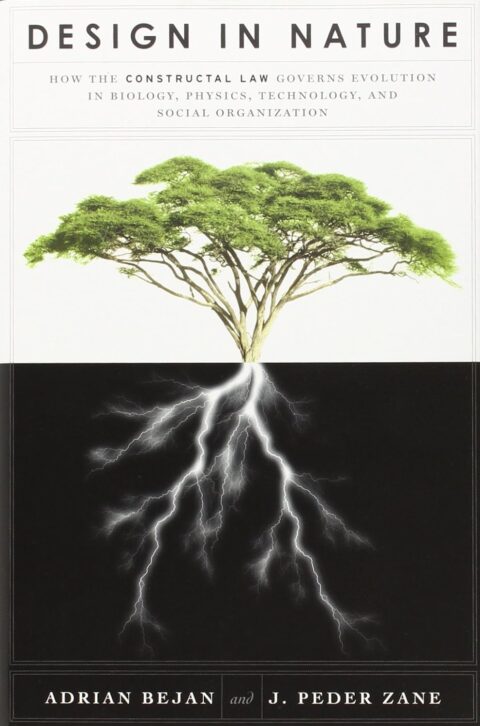Design in Nature: How LMO Helps Building Industry Clients Persist
Written by Andy Solages, Senior Technical Content Manager
If you follow LMO on social media, you may have seen our “National Reading Month” posts in March sharing book selections from LMOers. My pick was Design In Nature: How the constructal law governs evolution in biology, physics, technology, and social organization by Adrian Bejan and J. Peder Zane. Published in 2012, the book presents influential engineer Adrian Bejan’s constructal law to the nerdy end of lay audiences.
I learned of Design in Nature at the 2024 AHR Expo from a brilliant building scientist friend who mentioned how it had transformed her thinking about design. When building industry big brains are buzzing about books, LMO checks them out.

Bejan argues that every finite moving thing is a flow system characterized by a current of something moving through a design. Currents can consist of anything: heat, fluid, information, mass, cars, pedestrians, Kendrick Lamar lyrics or the trendy water bottle of the month. Natural flow systems like trees, lightning bolts, rivers and animals spontaneously develop their design shape and structure to move currents. This process explains some of the natural harmonies beautifully described by our poets and mystics.
For example, the constructal law indicates that the pattern repetitions we see in seemingly unrelated flow systems for moving electricity from a cloud to the ground or another cloud (lightning), water from a plain to a river mouth (river), blood through our bodies (capillaries) and water from the ground to the air (trees) exist because “tree-like” structures are effective for point-to-area and area-to-point flows. If it’s not broken, nature doesn’t fix it.
Failure to move currents means death. The constructal law states, “For a finite-size flow system to persist in time (to live), its configuration must evolve in such a way that provides easier access to the currents that flow through it.” Over time, persisting flow systems gradually develop better configurations to move currents more efficiently despite environmental resistance (like friction). The freedom to reconfigure structures over time enables complex flow systems to survive.
As a law of physics, the constructal law empowers people to describe and predict the design of a persisting flow system without direct observation. Practitioners start by identifying what is flowing and then considering what shape and structure would allow efficient movement. For example, Bejan showed how to draw the shape and structure of trees by considering water flow and the flow of stresses caused by wind.
The constructal law also applies to artificial flow systems like organizations, highways, information networks, refrigerators, heat pumps and buildings. In the early 1990s, Bejan began developing the ideas he later refined in the constructal law while doing theoretical research on how to cool electronic system circuits without a moving fluid. Today, professionals in diverse fields use the constructal law to assess, design and predict flow systems and their performance. This includes people like my building scientist friend, who is working through ideas about built environments as flow systems.
As I read the book, I thought about homes and buildings as complex flow systems containing smaller interdependent flow systems moving air, heat, water, particles, people and pets. But we always return to the idea of the built environment as existing for people. Whatever flows within a building should empower the “human flow system” to persist through time more easily. Human well-being should be the supreme measure of artificial systems.
I’m considering constructal law implications and possible applications, but I’m not rushing. Contextless maybe-facts delivered in short, entertaining bursts can be fun, but nothing beats deep engagement with subjects and ideas over time.
Businesses that hire LMO get a team of readers that can think with them and draw out the best from their subject matter experts (SMEs). Whether we ultimately incorporate a book’s concepts into client content, we study so that our conversations and collaborations with building industry SMEs flow easily.
###




